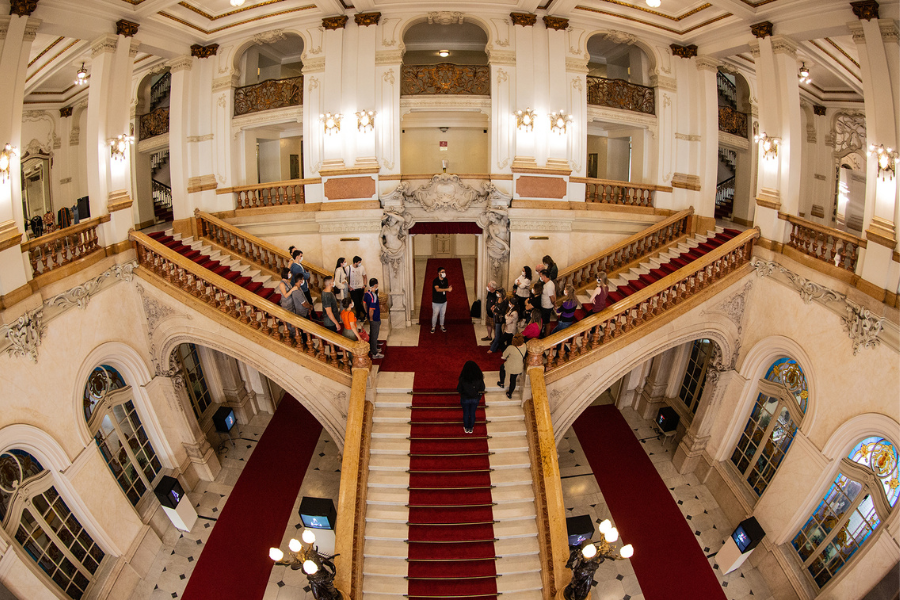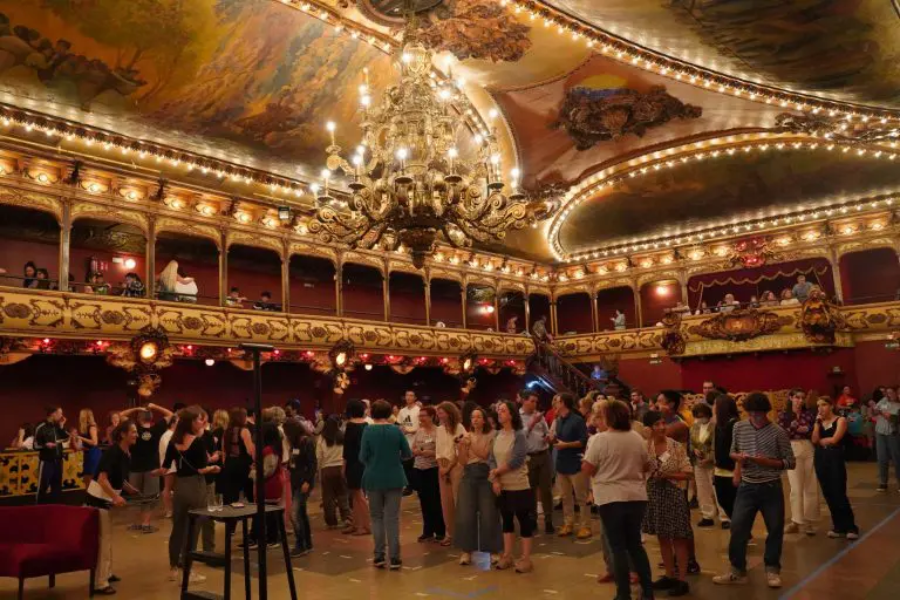Foro Digital OLA: Desarrollo de audiencias, ¿están regresando los espectadores?

¿Cómo ha cambiado el comportamiento de las audiencias en los últimos años? ¿Qué hemos aprendido? ¿Hay tendencias que nos permitan establecer estrategias para atraer y vincular a nuevas y actuales audiencias?
por Paulina Ricciardi
El primer foro digital de Ópera Latinoamérica en 2023 tuvo como foco conocer más del comportamiento de las audiencias y su regreso a los teatros, a través de las herramientas y trabajo de la consultora TRG Arts, una consultora inglesa-estadounidense que trabaja en la industria de las artes y la cultura.
Por medio de encuestas y recopilación de datos, TRG Arts provee servicios y tecnología para dar forma a la resiliencia organizacional, centrándose en las áreas de relación con los clientes, sostenibilidad financiera, marco organizacional y desarrollo de equipos.
A través de datos comparativos de más de 400 organizaciones de Estados Unidos, Canadá, Irlanda y Reino Unido, que comparten la información de sus ticketeras y donantes, Eric Nelson, vicepresidente y partner global de TRG Arts, presentó un panorama de datos desde el 2019 al 2022 en el que podemos entender mejor el comportamiento de las audiencias.
Comparativamente al 2021, en 2022 hay un incremento en la venta de tickets principalmente en la época de fiestas (noviembre–diciembre). Frente a este incremento, la pregunta de muchas organizaciones fue: “¿Debemos bajar, aumentar o mantener los precios?”. A lo que la respuesta es que no, no se recomienda bajar los precios, pues las encuestas (en Estados Unidos y Reino Unido) muestran que las personas que van a ver un espectáculo lo consideran un evento especial por lo que están dispuestos a pagar.
Tendencias generacionales
En cuanto a tendencias generacionales, desde el 2019 se han perdido audiencias a lo largo de todas las generaciones. Sin embargo, las que más se han mantenido son las generaciones X, Z y millenials, Lo que lleva a creer que los que están volviendo son audiencias jóvenes.
Estamos viendo grupos más jóvenes dispuestos a regresar más rápido y comprar entradas que las generaciones más mayores, que debido al COVID-19, demorarán más tiempo en volver a los teatros.
La oportunidad entonces está en involucrar a audiencias más jóvenes para que regresen. Otro motivo interesante de considerar por el que estas audiencias están regresando, al menos de acuerdo con los datos recolectados en Estados Unidos, es la cantidad de programación para familias que se hizo durante la pandemia
Motivaciones de la audiencia para regresar
Un estudio canadiense, realizado trimestralmente a consumidores culturales, reveló que el motivo para asistir a un espectáculo para el 40% de los encuestados es una programación que sea interesante y divertida.
Otro motivo para regresar es la oportunidad de socializar tanto con la gente con que van como conocer a los artistas.
Dada ciertas opciones que motiven el regreso, los encuestados respondieron que les gustaría poder elegir su asiento. Otro elemento que surgió de estas encuestas es que les gustaría poder entrar con sus bebidas al auditorio.
Después de años de pandemia y explosión tecnológica digital tenemos muchas oportunidades para reimaginar la relación con las audiencias.
En base al panorama tecnológico y regreso de las audiencias, Google compartió información sobre cómo la mente de los clientes ha cambiado durante la pandemia, donde ahora la gente tiene diferentes prioridades o hábitos:
- Conveniencia: la gente quiere que las cosas sean lo más conveniente posible eso incluye la experiencia de comprar tickets, el uso de apps, etc.
- Nuevos escapes: la gente tiene otros intereses, es más flexible porque hay más opciones (virtualidad) pero también quieren actividades presenciales. ¿Cómo la programación responde a eso?
- “Nuevo yo”: hay un interés por el bienestar personal (wellbeing) por el cuidado personal y de otros. Por ejemplo, la inclusividad. ¿Cuándo es el mejor momento para levantar el telón?
- Nuevas prioridades: La gente está filtrando más sus intereses, por lo que hay que pensar en el mensaje que se está entregando.
- Nueva responsabilidad: Las audiencias están conscientes y resonando con temas sociales, medioambientales y de privacidad –qué y cómo se muestra la información.
Inmersivo – gamificado – diverso
Lo que estos estudios muestran es el aumento de audiencias jóvenes y el desarrollo tecnológico sucedido desde la pandemia, lo que motiva a los teatros y organizaciones a relacionarse con las audiencias desde esos lugares, incluyendo en la experiencia total (compra de tickets, validación de entradas, mailings, etc.) elementos de gamificación que los acerquen al público.
Por otro lado, que la diversidad en el escenario y en la oferta de contenido sean reflejo de nuestras comunidades también es relevante en la decisión de la audiencia para ir o no a un espectáculo.
Una de las razones por la que los públicos no participan o no vuelven es por lo poco amigable de los sitios webs, o la compra online de las entradas, la logística de ir al teatro (estacionamiento, distancias o que no hay cafés, o bebidas) la bienvenida en el teatro. No es sólo la tecnología o la programación sino también la experiencia que los haga sentir bienvenidos.
5 consejos finales
En base a todos estos datos, Eric nos deja 5 tips para cuidar y mantener a nuestras audiencias:
- Escucha a tu público
- Medición. Se consistente con los objetivos que te pones y usa los mismos parámetros para mantener registro de tu crecimiento.
- Invítalos a volver lo más rápido posible.
- Sorpréndelos
- Evoluciona. Tu organización tiene que estar lista y dispuesta a cambiar.
Sobre el expositor
Eric Nelson, Vice President, Global Partnerships en TRG Arts, se enorgullece de asociarse con organizaciones de artes escénicas y visuales de todas las formas y tamaños para aumentar la participación de los patrocinadores, los ingresos y el impacto en la comunidad. Antes de unirse a TRG Arts, Eric fue director de marketing y comunicaciones del Kaufman Music Center de la ciudad de Nueva York. También fue vicepresidente de servicios al cliente, nuevos negocios y marketing de DCM, y se especializó en estrategias de marketing y recaudación de fondos para organizaciones sin fines de lucro. Eric comenzó su carrera en las artes liderando los esfuerzos de marketing de Paul Taylor Dance Company.






